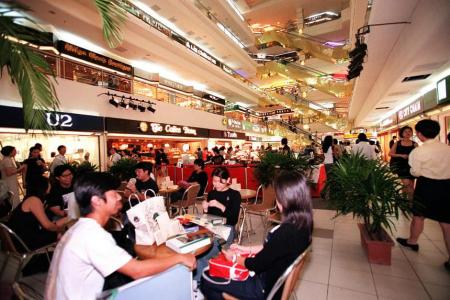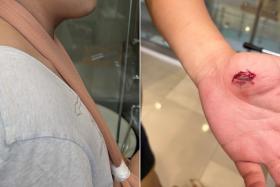Centrepoint kids and Yaohan: Book captures S'pore's 1980s 'mall generation'
One particular memory is etched fondly in independent scholar Liew Kai Khiun's mind - a school day he spent in a mall.
In 1981, then aged eight, Dr Liew tried to skip school by telling his mum he was ill and she agreed.
A few hours later, the supposedly ill boy found himself in the toy section of departmental store Yaohan in Thomson Plaza with his mother, eyeing a Millennium Falcon toy priced at about $150.
"Even as a boy in the 1980s, I knew it was prohibitively expensive," writes Dr Liew in his new book, The Singapore Mall Generation: History, Imagination, Community. "Miraculously, she agreed to purchase it for me."
Today, more than four decades after his mother yielded to his toy request, Dr Liew, 49, still counts himself fortunate for that day which has since become a significant memory marker of his childhood.
He described the book - which he edited and comprises 10 chapters, some by contributors - as a heritage project that captures Singapore's post-independence, contemporary history largely set in the 1980s, where Singaporeans evolved together as part of a modern nation.
National Development Minister Desmond Lee, who was guest of honour at the book's launch at the National Library on Monday evening (May 30), said malls have become an important part of many Singaporeans' lives, noting that they are intertwined with cherished personal memories for many, such as the place of their first date.
"For me it was Jurong Point, we were playing Puzzle Bobble," said Mr Lee, who added that he had spent a lot of time in the recently conserved Golden Mile Complex in his early childhood.
Comparing the malls whichsprouted in 1970s and 1980s Singapore to real estate investment trust (Reit)-owned malls today, Dr Liew said the malls of the past - many of them strata-titled - offered an eclectic mix of businesses that were a fertile ground for the growth of subcultures among the young people that hung out in them.
But today's Reit malls are highly curated and have a predictable suite of offerings, many of them housing a similar mix of chain stalls, branches and franchises, said Dr Liew.
"A religious amulet shop could exist right beside one selling extreme metal music - it's this mishmash that makes old malls a lot more colourful," he said.
In the book, Dr Liew noted that in the 1980s, Singapore's contemporary youth cultures became synonymous with malls and discotheques, with references to "Far East kids" and "Centrepoint kids" often seen in the media.
But those terms and communities, once "perceived by the public as a disturbing display of youth deviance", have now become a nostalgic reference to now ageing malls, wrote Dr Liew. He said that with the proliferation of social media, today's youth no longer go to malls to "exhibit and showcase themselves, and meet up with others", contributing to a decreased interrelation between malls and youth culture.
Despite this, architectural photographer Darren Soh, 46, argued in his chapter that some old, strata-titled malls will continue to thrive despite becoming rarer, as they have evolved into institutions whose shoes new Reit-owned malls cannot fill.
Citing Queensway Shopping Centre, which has over time developed its niche as the place to shop for sporting goods, Mr Soh said he believes such "specialised strata-titled malls" will continue to service those who want multiple shops to choose from when purchasing a specific item.
Owners of niche shops in Queensway are doing so well that they see no need to back any attempt for a collective sale of the shopping centre, he noted in his chapter, referencing a botched attempt at an en bloc sale of the mall in 2019.
The book, published by Marshall Cavendish Business and supported by the National Heritage Board, is on sale at all major bookstores and online shops at $32 before GST.
Get The New Paper on your phone with the free TNP app. Download from the Apple App Store or Google Play Store now


